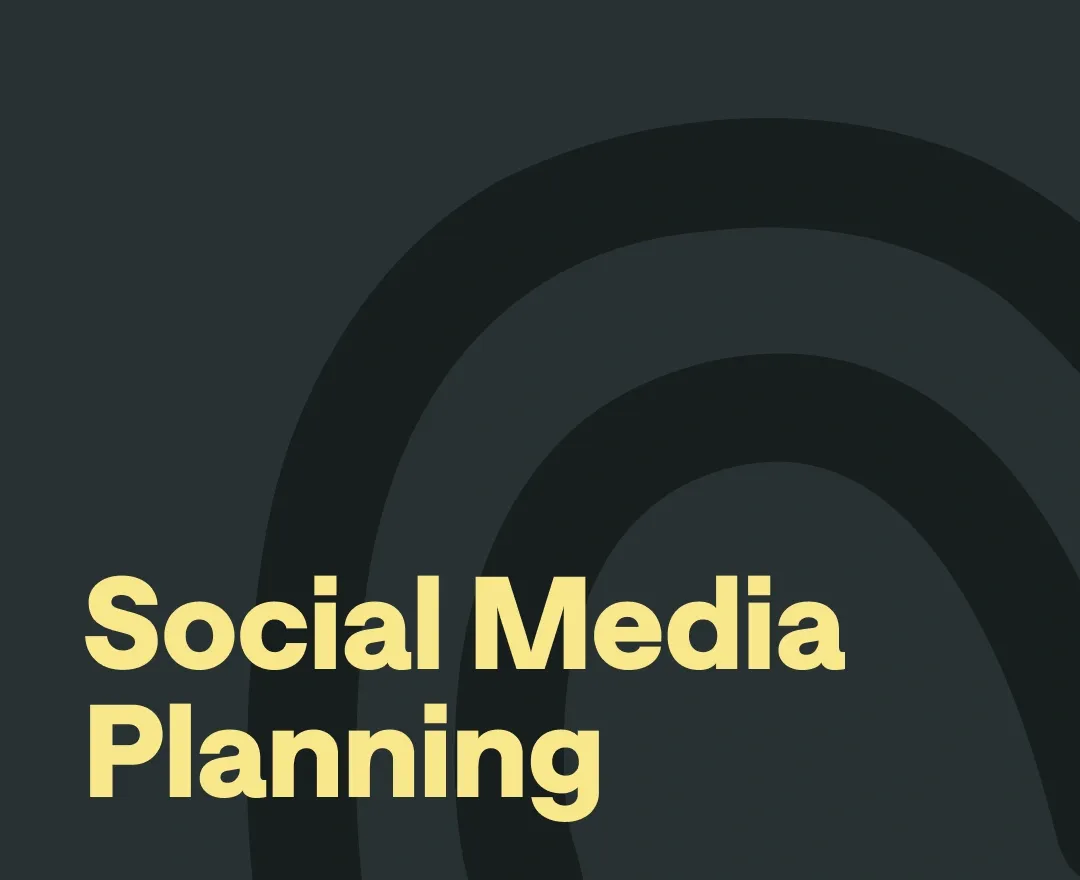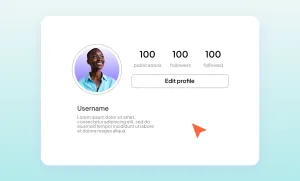When it comes to building an online presence, winging it is not a strategy. Learning how to plan social media content effectively is all about having a clear vision, strategy, and execution plan. It’s not just about posting randomly—it’s about delivering the right message to the right audience at the right time. So, if you’re new to it, don’t worry—we’re here to break it all down.
But first, let’s start with the basics:
Why is a social media plan important?
Imagine trying to build a house without a blueprint—you might get the job done, but the results would be chaotic and unpredictable. A social media plan works the same way: it provides structure, direction, and purpose, ensuring that your efforts are effective and efficient. Here’s why it’s essential:
- Saves time and resources: A well-thought-out plan helps you work smarter, not harder. By organizing your content and scheduling posts in advance, you avoid last-minute scrambling and make better use of your resources.
- Keeps your messaging consistent: Consistency is key when building a brand. A social media plan ensures your tone, visuals, and messages stay cohesive across platforms, helping you create a recognizable and professional presence.
- Aligns with your goals: Whether you’re looking to drive traffic, boost engagement, or generate leads, a social media plan keeps your content focused on achieving your objectives. Every post serves a purpose, which translates to better results.
- Helps measure success: Without a plan, it’s difficult to know what’s working and what’s not. By setting clear goals and tracking metrics, you can analyze your performance and refine your strategy for even better outcomes.
- Prepares you for the unexpected: From last-minute campaigns to handling negative feedback, a social media plan includes contingencies that allow you to respond quickly and professionally.
How to plan social media content (step-by-step)
Creating a social media content plan doesn’t have to be overwhelming—it’s all about taking it step by step. And that’s exactly what we did! So, if you want a complete guide to start with, here it is:
1) Start with audience research (know who you’re talking to)
Before planning your social media content, the first and most crucial step is understanding your audience. Think of it like hosting a dinner party—you wouldn’t serve sushi to guests who hate seafood, right? The same rule applies here: you need to know what your audience wants so you can give them exactly that.
Why does audience research matter?
Your content plan should be tailored to resonate with the people you're targeting. Without understanding who they are, their interests, and their pain points, your posts could feel like shouting into the void. On the flip side, well-researched content hits the sweet spot—it boosts social media engagement, builds trust, and helps achieve your content marketing goals, whether that's brand awareness or driving sales.
How do you start your audience research?
- Start with analytics: Platforms like Instagram, Facebook, and Twitter provide free audience insights. Dig into demographics like age, location, and behavior to see who’s already engaging with your content.
- Conduct surveys and polls: Ask your existing followers about their preferences. What do they enjoy? What challenges do they face? This direct input is gold.
- Create buyer personas: These are fictional profiles of your ideal customers. Include details like their goals, challenges, favorite platforms, and preferred content types.
Pro Tip: Spy on your competitors
No shame here! Check out what your competitors are posting and how their audience is reacting. This can give you ideas for your content creation strategy—or warn you of what not to do.
Once you get to know your audience, every post in your social media calendar will feel intentional and valuable. This will also make the rest of the planning process much smoother.
2) Choose the right platforms for your content
Not every social media platform is a good fit for your content plan. Each one caters to different audiences and content types, so focusing on the right platforms will save you time and effort. By understanding where your target audience hangs out, you can make sure your content shines where it matters most.
Here’s how to choose the perfect platforms for your content planning for social media:
- Instagram: Great for visual storytelling, influencer collaborations, and behind-the-scenes looks.
- LinkedIn: Best for professional updates, B2B content, and thought leadership.
- TikTok: A hotspot for short, entertaining videos that appeal to younger audiences.
- Facebook: Ideal for community building, events, and long-form updates.
- YouTube: The home of evergreen content, long-form videos, and in-depth storytelling.
- X (formerly Twitter): Perfect for hot takes, news breaks, and sparking discussions that put your ideas in front of an engaged, curious (and sometimes unhinged) audience.
- Threads: A casual, text-first space for unfiltered thoughts and brand personality. A place for quick insights, memes, and relatable one-liners.
- Bluesky: A growing hub for authentic conversations and niche communities, making it a fresh space for thoughtful content.
- Reddit: The ultimate home for niche communities and deep-dive discussions, where value-driven content thrives and audiences reward authenticity.
Whichever route you go, match your goals to the platform. Want to boost social media engagement? Focus on platforms like Instagram or TikTok, where interactive content thrives. Looking for leads? LinkedIn and Facebook might offer better ROI.
You'll also want to evaluate your resources. Platforms like YouTube and TikTok need more time for video production, while Twitter requires consistent real-time updates. Choose what you can manage effectively.
But make sure you start small. Pick 1-2 platforms that align with your brand and content creation strategy, and scale up as you gain confidence. You don't want to spread yourself thin at the very beginning.
3) Align your content with your goals
Every piece of social media content you create should serve a purpose. Without clear goals, even the most creative posts can feel directionless. Whether you aim to increase brand awareness, drive traffic, or build a loyal community, having specific objectives will make your content planning more intentional and effective.
Step 1: Define your goals
Start by asking yourself what you want to achieve with your social media scheduling. Here are some common objectives:
- Engagement goals: If your focus is boosting likes, comments, and shares, create content that encourages interaction, like polls, Q&A sessions, or contests.
- Traffic goals: If your aim is to drive website visits, craft compelling captions with strong calls-to-action (CTAs) and include links to your site or blog.
- Sales goals: Planning a product launch? Use carousel posts, demo videos, or tutorials to showcase your offerings and encourage purchases.
Step 2: Map content to goals
Once your objectives are clear, match your content type to each goal. For instance:
– Use educational posts or tutorials to build trust and authority.
– Share user-generated content or testimonials to foster loyalty.
– Create trend-based posts or entertaining reels to increase social media engagement.
Step 3: Track and adjust
Your marketing content planner should be a living document. Monitor how your posts perform using analytics tools, and tweak your strategy based on what’s working.
By aligning your content with your goals, you’ll not only streamline your content batching process but also ensure every post contributes to your broader content creation strategy. When your content and goals work hand in hand, success becomes a lot more achievable.
4) Optimize your tools and processes: The technical side of planning
A strong social media content plan relies not just on creativity but also on efficient tools and processes. These technical elements help you stay organized and avoid the stress of last-minute posting, ensuring your content goes out smoothly and consistently.
Step 1: Set up a social media calendar
Your social media calendar serves as a roadmap for all your platforms. Use tools like Google Calendar, Notion, or scheduling platforms such as Buffer or Hootsuite to organize:
– Post dates and times for each platform
– Content types (e.g., video, carousel, or link post)
– Planned captions, hashtags, and links
Having a detailed calendar helps you keep track of your strategy, especially during busy periods or campaigns.
Step 2: Batch your content creation
Content batching involves preparing multiple pieces of content in one sitting. This method saves time and ensures consistency across posts. For example:
– Monday: Write captions and choose hashtags.
– Tuesday: Create visuals or videos for the week.
– Wednesday: Schedule all your content using your tools.
Batching allows you to focus on specific tasks, making the planning process more efficient and less overwhelming.
Step 3: Leverage scheduling tools
Once your content is ready, platforms like Later, Planoly, or Sprout Social can automate your posts. Scheduling in advance helps maintain a consistent presence, even during weekends or holidays, and allows more time for audience interaction.
Optimizing the technical aspects of your social media content plan improves efficiency and guarantees consistency. A well-planned process builds a reliable presence, which strengthens your brand’s connection with its followers.
5) Master content repurposing (work smarter, not harder)
Creating fresh content for every post sounds ideal, but let’s be real—it’s time-consuming. That’s where content repurposing comes in. You can maximize your lifespan and reach without doubling your effort by reworking one piece of content into multiple formats.
How to repurpose content like a pro
- Start with evergreen content: Choose pieces that have lasting value, like a blog post about industry tips or a tutorial video. These are ideal for turning into bite-sized posts, reels, or infographics.
- Turn long-form content into short snippets: Break long-form content into smaller pieces, like transforming a blog, podcast, or webinar into an Instagram posts or a LinkedIn thread.
- Switch up the format: Convert written content into audio by turning a how-to guide into a short podcast or visual infographic. Snag highlights from webinars or videos to create quick clips for Instagram Stories, TikToks, or LinkedIn.
Common mistakes to avoid in social media content planning
Even the best-laid plans can go off track if you’re not careful. Here are some common pitfalls that can derail your social media content plan (and how to steer clear of them.)
1) Overloading on quantity, forgetting quality
Posting too frequently without ensuring the quality of your content is a fast track to losing followers. It’s better to post less often but with valuable, well-thought-out content. Stick to your social media calendar and focus on creating posts that provide genuine value to your audience.
2) Forgetting to track performance
If you’re not analyzing how your content performs, you’re essentially planning in the dark. Use tools like Instagram Insights, Google Analytics, or social media scheduling apps to measure what’s working and what’s not. Adjust your social media workflow accordingly to stay on track.
3) Relying too much on automation
Automation tools like scheduling apps and templates are lifesavers, but over-relying on them can make your content feel robotic or out of touch. Your audience wants authentic engagement, not canned responses or generic posts. Strike a balance—automate tasks like posting, but take time to interact personally with your followers.
4) Forgetting to refresh evergreen content
Evergreen content is fantastic, but it’s not truly “set it and forget it.” Over time, even the most timeless posts may need updates to stay relevant. Review and refresh your evergreen pieces regularly, whether it’s tweaking stats, updating visuals, or refining captions to reflect current contexts.
5) Ignoring trends and spontaneity
While planning is essential, sticking rigidly to a schedule can make your content feel outdated or irrelevant. Keep an eye on trends and leave room in your social media calendar for last-minute posts. A flexible approach allows you to stay current and connect with your audience in real-time.
6) Overcomplicating your strategy
Some brands try to do too much—posting on every platform, experimenting with every format, or juggling too many campaigns at once. This often leads to burnout and scattered results. Focus on simplicity: build a manageable social media content plan that prioritizes quality over quantity and aligns with your resources.
7) Skipping A/B testing
Not testing variations of your content is like leaving potential success on the table. Whether it’s captions, visuals, or post formats, experimenting with A/B testing can reveal what resonates best with your audience. Over time, these insights can improve your overall content creation strategy.
Final Thoughts
Planning social media content doesn’t have to be overwhelming—it’s about having a clear vision, knowing your audience, and staying consistent. With the right tools and a little creativity, you can turn your ideas into impactful content that resonates with your audience.
That’s where Podcastle comes in. From creating high-quality videos and podcasts to enhancing your content with AI-powered editing, Podcastle helps you bring your social media strategy to life with ease. Pair it with effective social media planning tools, and you’re set to achieve your goals effortlessly!








